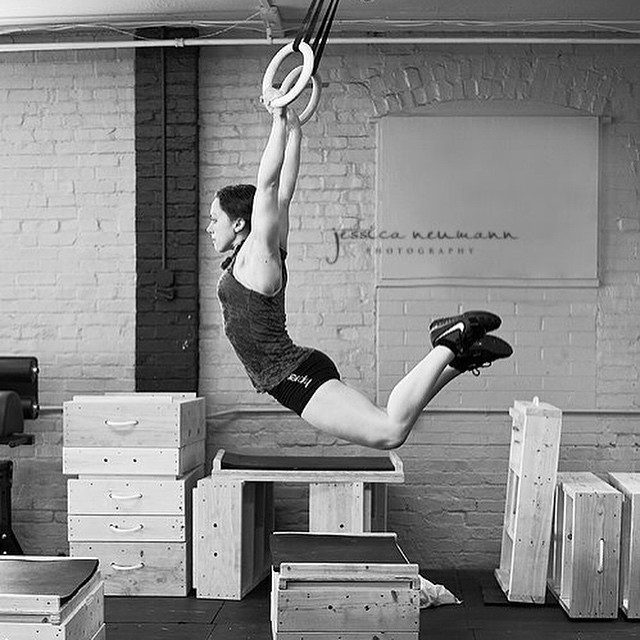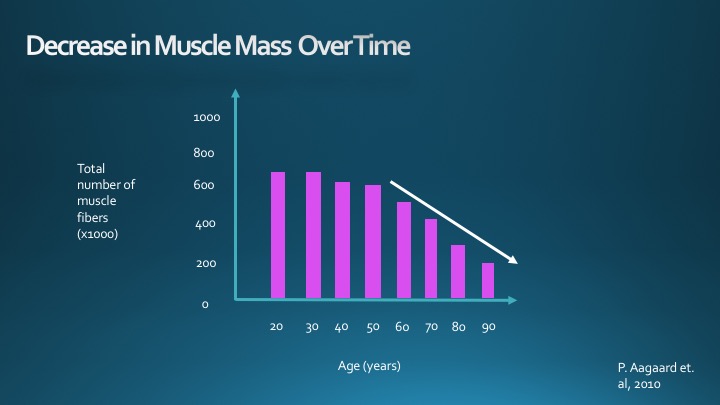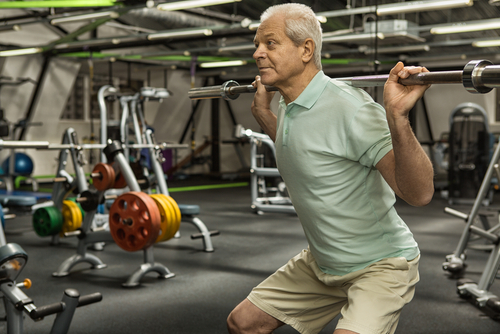
Jess Bateman has combined a knowledge of Orthopedics and injury prevention to benefit many athletes in the world of functional fitness and weightlifting. She herself has both competed at a national level in Olympic Weightlifting and spent the last five years coaching Senior and Youth athletes, as well as having obtained a USAW-SPC credential.
Getting Older Without Getting Old
Picture two 75-year-old individuals. One lives in their own home, works a part-time job at a hardware store and enjoys tossing a ball for their golden retriever. They love spending time with their grandkids and are easily able to get up and down from the floor to play with them. They travel often and feel comfortable walking without a cane, even on the uneven sidewalks in the old town. The second 75-year-old recently moved into an assisted living facility after their second major fall in a year. They need a walker to make it down the hall. They have difficulty getting in and out of a chair without assistance and haven’t been able to get out to their favorite restaurant for a few years now.
Significant medical concerns may have played a role in the second person’s current condition. Strokes, cancer, and other conditions can be devastating for a person’s physical abilities and have a long road to recovery. However, sometimes there is another potential insidious cause for this person’s loss of function: The loss of strength and muscle mass.
Preventing Muscle Loss
An unfortunate side-effect of aging is a condition called sarcopenia. This is the progressive loss of muscle mass that occurs as we get older. Sarcopenia (or muscle atrophy) not only affects the actual size of our muscles but also the ability of nervous system cells to activate these muscles, making it more difficult to activate what muscles you do have. The condition starts slowly and often goes by unnoticed until it significantly impairs function – typically between 70-80 years of age. What begins as an irritating inability to easily move furniture around the house or complete heavier yard work suddenly affects simple things like standing up from a chair, going up the stairs, or being able to walk from the car to the grocery store.
I think the vast majority of us cherish our independence in adulthood. I had shoulder surgery a year ago, and the hardest part of the recovery was asking for help with basic tasks. After a decade of managing for myself, I suddenly needed help with driving, cleaning my home, or even dressing. Thankfully, this was a short-term inconvenience. It made me realize how hard this loss of function can be for anyone, and how hard it can be to ask for assistance even when it’s needed. And it made me think about how badly I want to maintain my independence as I age.

The age-related decline seems to accelerate from age 60 on. It most drastically affects our legs rather than our arms. And this is concerning from a functional standpoint. Loss of lower extremity strength increases your risk of falling as it affects balance. It also hampers the ability to walk at a maximal speed, which is important in all aspects of life. In fact, the speed at which older adults can walk is one of the best predictors of near-term mortality (how likely they are to die over the next year).
Use It or Lose It
Muscle atrophy can be an ugly, self-fulfilling cycle. The more time spent on bed rest after a major injury or illness only leads to further loss of strength and power. Which, in turn, places you at a higher risk of new injuries or unable to complete activities of daily living – such as sitting safely to a toilet or cleaning the house. These all factor into our long-term quality of life.
Atrophy happens whether we want it to or not, but the severity and how much it affects you is greatly within our control. Studies showed individuals who consistently participated in strength training throughout their life had 25% more type II muscle fibers than untrained individuals. These muscle fibers specifically help with overall strength and explosiveness in a particular muscle. When I say “explosive”, I don’t mean in a way that a 65-year-old could compete in a 40-yard dash with a 20-year-old. These are quick firing muscles that provide the strength to do rapid motions like standing from a seated position or going up stairs at a functional pace
Think of this muscle “bank” as a retirement fund. Two individuals may retire at age 70 and have the same monthly expenses. The person with $350,000 in savings will run out much faster than the person who has $1 million. Someone with greater muscle strength, to begin with, will not notice the daily effects of muscle-loss as much as someone who has trained their body only to handle everyday activity. The stronger person is also much better equipped to deal with bumps in the road, such as a knee replacement or bout of pneumonia.
Starting back at the gym
For those that haven’t stayed as active as we should, there is good news! It’s not too late to offset the effects of aging. Between ages 60 and 80, the average person loses 40% of their functional strength!!! But wait, that’s not a death sentence! This strength deficit can be reversed after just a 12-week bout of strength-training! Even nursing home residents can see up to 30% improvement in function and strength in just a few weeks of regular strength training. By the way, these study participants averaged 87 years of age. Not all exercises are equal, though. Walking or other aerobic activities do not help reduce the effects of age-induced muscle atrophy. They are beneficial in terms of cardiovascular health but simply cannot give the same benefits as strength training. More recent studies have shown that individuals in their 90s can benefit from a progressive strength training program!

Get A Good Coach or Trainer
Technique and appropriate weight are incredibly important for strength training success in older people. Poor form or doing too much too quickly can lead to injury more easily than in a younger person. Especially if that person has lived a life worth telling about! Having a gym with a knowledgeable and involved coaching staff is key. High-Intensity Interval Training with functional motions can be a helpful tool, as it combines both the aerobic work for heart health and technique-focused strength training. It’s often cost-effective when compared to personal training rates, too.
Set The Right Goals
It is 100% OK that your goals are not the same as the younger clients in the gym. You are not “wasting” anyone’s time because you are performing bodyweight squats to a box while others are loading weights on a bar. As a coach, I find far greater fulfillment in helping someone regain the ability to literally pick themselves up off the floor than from helping someone achieve a new back squat record.
If group training isn’t your thing, that is totally OK too. Some of you may be truly starting from square one, whether that’s due to a chronic sedentary lifestyle or recent surgery or illness. And it may be too much for a coach or personal trainer to assist you safely. This does not mean you should give up. Please, talk to your doctor about physical therapy. They can do far more than just helping you recover from a joint replacement.
It doesn’t matter where you start. It’s just very important that you do. The best thing you can do for your quality of life is to be active!

